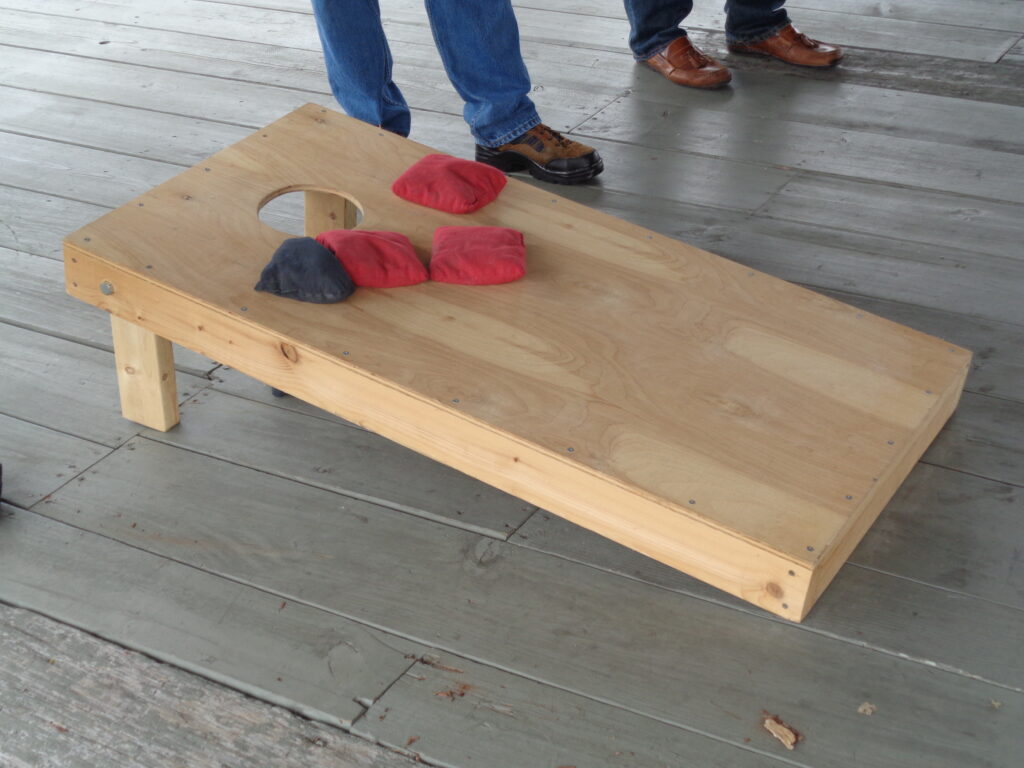I think that, since the semester is starting and there were some interesting developments this season, I should first endeavor to chronicle the games that came to fruition over the summer.
Patternfilling one of a few word disciplines that have resulted from me messing around with Lexpert, which could quite possibly be my favorite program in the world. I believe that the Lexpert project started as a Scrabble player’s tool, but it also contains tools that can assist the crossword player, cryptogram cracker, and general wordplay enthusiast. (It was a real boon in solving the Confounded Compounds!)
The inspiration for the concept of patternfilling actually came from a game of Literati that Ron and I played a few months back. Across the second row from the top were two copies of the letter I, placed one space apart, through which he created the word RICIN. It got me wondering — how many similar words could have filled that slot? In particular I was looking for five-letter words because of the restrictions on the board. Thom and I searched for a little bit at his apartment the next day, lounging about, listening to Regina Spektor, and trying to fill the pattern ?I?I?. Ricin, limit, timid, vivid, civic, … I think we wound up with sixteen or seventeen. When I got home I finally had the genius idea to put it through Lexpert, which claims fifty-five matches for the pattern.
Then I started playing around. ?O?O? gave sixty-six returns. S???K — fifty-six. Interesting words, too, like BORON and SMOCK. I had an idea for how to make it a real exercise. I wanted to keep the atmosphere of people lounging around and thinking up the words, but a strict back-and-forth isn’t feasible because one person will inevitably run out before the other one does. Yet a free-for-all like Thom and I had isn’t really good either because whoever has more words off the top of their head will be favored in that case
The middle ground I hit upon was first played with Nelson, Karen, and I. Players give words in turn, but only have 40 seconds (45? 60? We usually play 45 or 50 seconds when playing by IM, because timekeeping and typing is time-consuming) to come up with their word. Once a player gives a word that fits the pattern, the next person’s time begins. Once every player fails to come up with a word in succession, the group has one turn left to come up with a word to kick-start the rotation again. If the group time expires without a word, the round is over. (As I type this, I wonder if it would be better that, once everyone fails, it becomes a total free-for-all. That is, once the final player’s turn has ended without a word, there’s a 40 second clock that ticks down to the end of the round, and once anyone says a word that clock resets, but there’s no more turn structure. I bet we’ll play this way from now on.)
The first time we played we discovered an issue — if the final letter is a wildcard, invariably thousands of plurals are admitted. But the point wasn’t to find cheap words that end in S. We’re supposed to be looking for cool words like RICIN and SWANK! So more complicated syntax has since arisen, to help avoid the problem of cheap words and to promote more exotic patterns. Here’s the syntax I’ve used for explaining patterns:
- ? : Single wildcard. So ????K would denote all five-letter words ending in K.
- * : Variable-length wildcard. *K denotes every word that ends in K (of any length).
- V : Vowel wildcard. When handwritten, this should be the capital letter V in a circle. V cannot stand for Y. ???VK is words that end in vowel-K, like CHEEK and BREAK.
- X () : User-defined wildcard. When handwritten, this should be the capital letter X in a circle. X can stand for whatever is specified within the parenthesis. To create the pattern for words that end in vowel-K or -yk, write ???XK (aeiouy).
- +[?] : Must contain [?]. ????K +A denotes five-letter words ending in K containing A.
- -[?] : Cannot contain [?] ????K -E denotes five-letter words ending in K without E.
Patterns usually will contain a couple of these elements; often to get around the issue of plurals that we discovered in our first game we’ll add the restriction -*S to remove all words that end in S from the list. (Perhaps a –P wildcard could be invented to remove plurals but keep other words that end in S that are legit like abyss?) The ideal number of words on the list to wind up with is between 45-75 for two players and 65-100 for three players. We’ve yet to patternfill with four people, but conceivably you could play the game with as many people as you’d like.
There is one other, perhaps glaring problem with this game, and that is that it’s Lexpert-dependent and can’t be played without the program. There’s not much I can say to defend it: it is Lexpert-dependent. Lisa suggested that perhaps I should put some lists together, edit out the obscure words (what is LIPIN, and what is it doing in my ?I?I? list?), and create a Flash game, and that’s actually an excellent idea… if there’s enough lists to make it worthwhile. The other issue I see is that doing an exercise like this will group the words that fit the pattern together in one’s mind, so I bet that a player’s score will increase markedly when presented with the same pattern multiple times. This means that the game has practically no replay value (to me).
I’ve left a few patterns for the reader here. If you’re filling them by yourself, in parenthesis are goal numbers of words to try to come up with. If you get more than the goal number, you’re doing pretty well. For solo play, I don’t think a time limit should be observed.
S???K (33)
[click for answers]
SAMEK
SCULK
SHACK
SHANK
SHARK
SHEIK
SHIRK
SHOCK
SHOOK
SHTIK
SHUCK
SKANK
SKINK
SKULK
SKUNK
SLACK
SLANK
SLEEK
SLICK
SLINK
SLUNK
SMACK
SMEEK
SMERK
SMIRK
SMOCK
SNACK
SNARK
SNEAK
SNECK
SNICK
SNOOK
SNUCK
SPANK
SPARK
SPEAK
SPECK
SPICK
SPOOK
SPUNK
STACK
STALK
STANK
STARK
STEAK
STEEK
STICK
STINK
STIRK
STOCK
STOOK
STORK
STUCK
STUNK
SWANK
SWINK
??F?? -*S (19)
[click for answers]
AFFIX
AWFUL
BAFFY
BEFIT
BEFOG
BIFFY
BIFID
BOFFO
BUFFI
BUFFO
BUFFY
DAFFY
DEFAT
DEFER
DEFOG
ELFIN
FIFED
FIFER
FIFTH
FIFTY
GAFFE
GOFER
HAFIZ
HEFTY
HUFFY
INFER
INFIX
INFRA
JIFFY
KAFIR
KEFIR
LEFTY
LIFER
LOFTY
LUFFA
MAFIA
MAFIC
MIFFY
MUFTI
NIFTY
OFFAL
OFFED
OFFER
PUFFY
REFED
REFEL
REFER
REFIT
REFIX
REFLY
REFRY
RIFER
RIFLE
RUFFE
SAFER
SOFAR
SOFTA
SOFTY
TAFFY
TAFIA
TOFFY
TUFTY
UNFED
UNFIT
UNFIX
WAFER
WIFED
WIFEY
WIFTY
WOFUL
???VY +A (18)
UPDATE: For more problems and solutions, see http://www.ajlvi.net/wordplay/patternfilling.html








